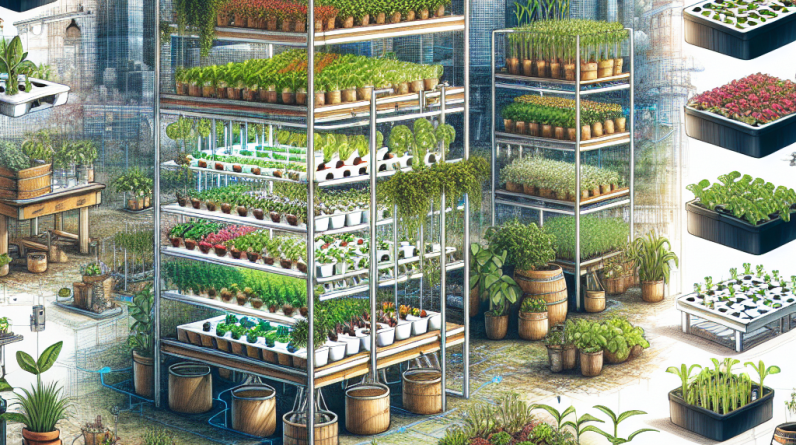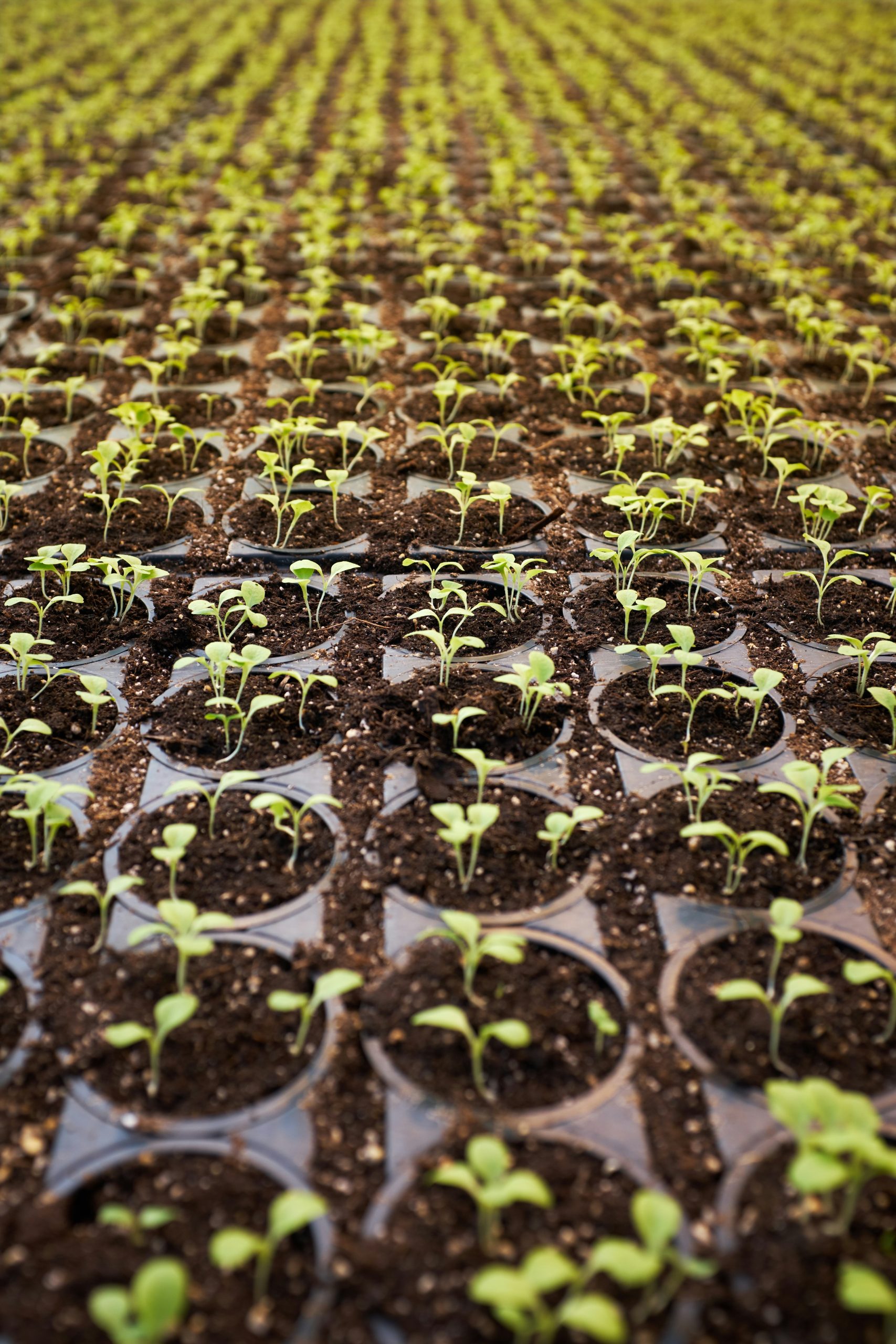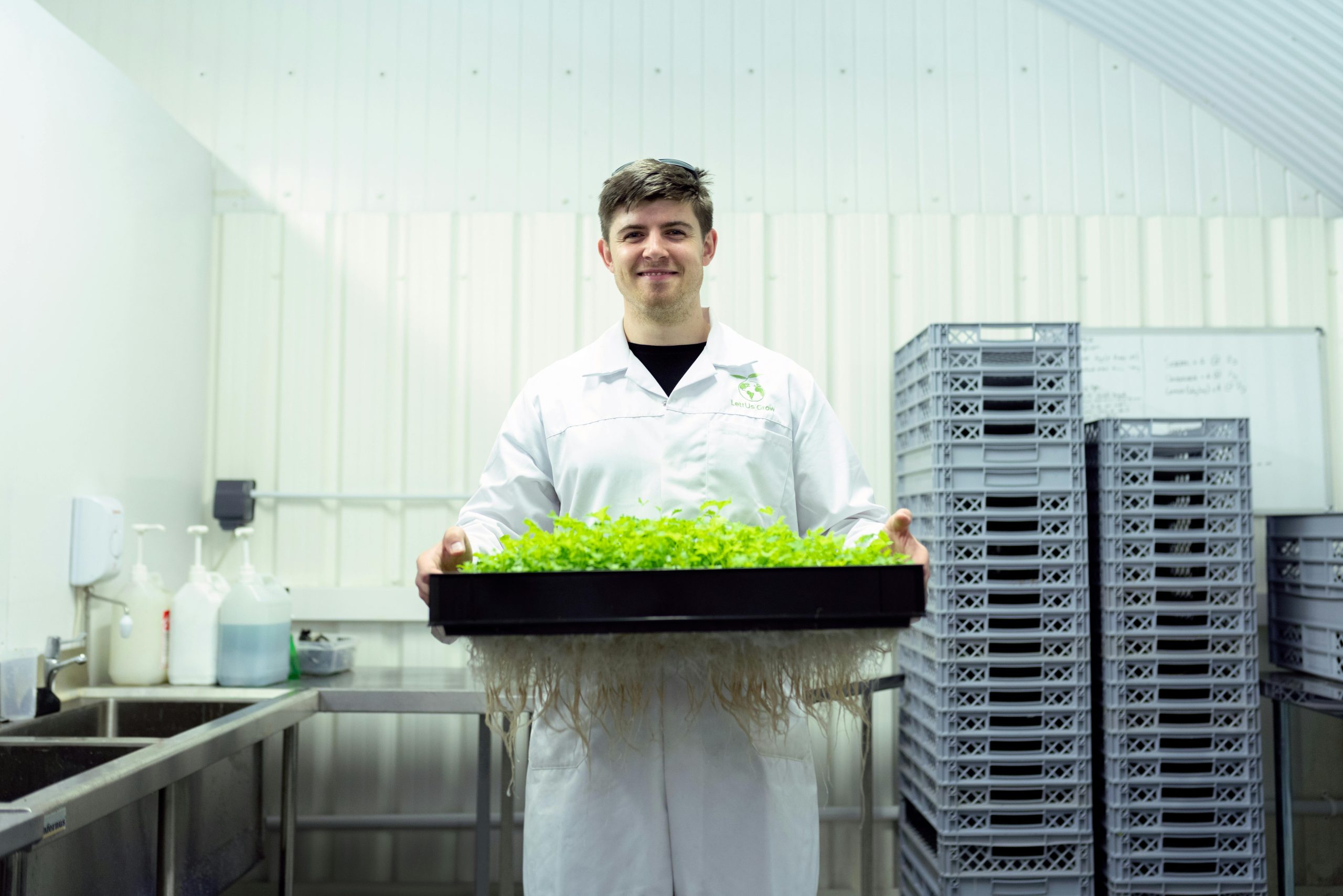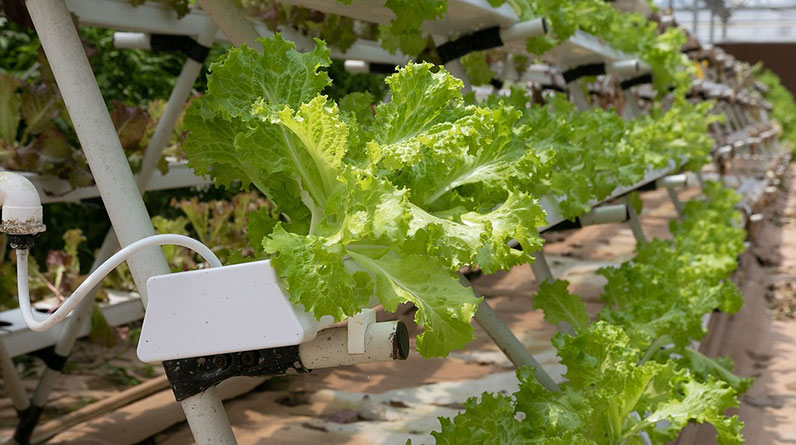
Table of Contents
- 1. Understanding the Basics of ebb and flow hydroponics
- 2. Choosing the Right System Components
- 3. Designing an Efficient Flood and Drain Schedule
- 4. Selecting Suitable Growing Mediums
- 5. Managing Nutrient Solutions Effectively
- 6. Monitoring pH and EC Levels
- 7. Maximizing Oxygenation for Healthy Roots
- 8. Troubleshooting Common Challenges
- 9. Incorporating Automation for Ease
- 10. Planning for Sustainable and Seasonal Growth
1. Understanding the Basics of ebb and flow hydroponics
What is ebb and flow hydroponics?
ebb and flow hydroponics, also known as flood and drain, is a popular method among home gardeners and commercial growers alike. This system periodically floods the grow tray with nutrient-rich water, then drains it back into a reservoir. The cycle allows plant roots to access nutrients while continuously receiving oxygenated water. In 2025, ebb and flow remains a top choice due to its efficiency, simplicity, and scalability.
Advantages of the ebb and flow method
This hydroponic style offers many benefits. It uses less water compared to traditional irrigation, making it environmentally friendly. It also reduces the risk of root rot because the roots are not constantly submergedâonly during flooding. Additionally, ebb and flow systems are adaptable for various crops, from leafy greens to fruiting plants, making them ideal for diverse growing setups.
How ebb and flow differs from other hydroponic systems
Compared to systems like NFT or DWC, ebb and flow provides a controlled environment with minimal equipment. Itâs more forgiving for beginners due to its straightforward design. In 2025, technological improvements have enhanced control over flood times and nutrient delivery, further increasing its popularity among growers seeking reliable results.
2. Choosing the Right System Components
Essential parts of an ebb and flow setup
To ensure success with ebb and flow hydroponics, selecting quality components is crucial. Key parts include a sturdy grow tray, a reliable water pump, a timer, a reservoir, and flood tables. All these parts work together to create an efficient flood and drain cycle. Investing in durable, corrosion-resistant materials pays off in longevity and consistent performance.
Selecting the best pump for 2025
The heart of your system is the pump. For 2025, energy-efficient, quiet, and adjustable pumps are recommended. A pump with a flow rate of 50-100 GPH (gallons per hour) typically suffices for small to medium setups. Consider smart pumps with Wi-Fi connectivity for remote control and monitoring. Proper sizing ensures plants are evenly irrigated without water wastage.
Optimizing flood trays and reservoirs
Choose grow trays that match the size of your space and plant needs. Light-colored trays reflect heat, helping maintain optimal root temperatures. The reservoir should be large enough to hold sufficient nutrient solution but accessible for maintenance. Proper sealing and secure fittings prevent leaks, which are common issues in ebb and flow systems.
3. Designing an Efficient Flood and Drain Schedule
Determining flood frequency and duration
In 2025, the trend is towards more frequent, shorter floods to optimize oxygen access and prevent water stagnation. For most leafy greens, flooding every 30-60 minutes for 15-30 minutes works well. Fruit-bearing plants may require longer flooding, around 60 minutes, but less frequently. Keeping a consistent schedule helps plants adapt and flourish.
Adjusting scheduling based on plant and environmental needs
Monitor plant response and environmental conditions to fine-tune your schedule. Hotter climates may benefit from more frequent flooding to prevent root heat stress, while cooler regions might need less. Use tools like app-controlled timers for real-time adjustments in 2025 to maximize plant growth and system efficiency.
Using automation for precision control
Automated timers and sensors make managing ebb and flow systems hassle-free. In 2025, integrating IoT devices enables growers to remotely adjust flood times based on real-time data, improving crop yields and conserving resources. This level of control is invaluable for scaling up operations or optimizing home setups.
4. Selecting Suitable Growing Mediums
Popular mediums for ebb and flow hydroponics
In 2025, many growers favor mediums like expanded clay pellets, coconut coir, or rockwool. These materials provide excellent drainage, aeration, and stability during flooding. They also support healthy root development and are reusable, reducing long-term costs.
Benefits of using inert media
Inert mediums do not interact chemically with the nutrient solution, ensuring consistent nutrient uptake. They also minimize the risk of pests and disease. Properly rinsed and sterilized, these substrates can last multiple grow cycles, making them environmentally and economically wise choices in 2025.
Tips for managing medium moisture levels
While flooding provides moisture, it’s essential to monitor residual moisture in the medium. Too wet, and roots may drown; too dry, and plants may stress. Use moisture meters and observe plant health indicators to optimize watering cycles. Maintaining a balanced moisture level promotes vigorous plant growth.
5. Managing Nutrient Solutions Effectively
Choosing the right nutrients for 2025
In 2025, advancements in hydroponic fertilizers have led to more balanced, organic options. Use pre-mixed solutions formulated for ebb and flow systems to ensure consistent nutrient delivery. Regularly source high-quality, pH-appropriate nutrients to prevent deficiencies and promote healthy growth.
Preparing and maintaining nutrient concentrations
Maintaining optimal nutrient concentrations is fundamental. Follow manufacturer guidelines but regularly test and adjust nutrient strength using EC meters. Typical EC levels for leafy greens range between 1.5-2.0, while fruiting plants may prefer slightly higher levels. Regular top-ups prevent nutrient imbalances that could hinder growth.
Monitoring and replenishing nutrients
Every 1-2 weeks, perform water changes or replenish the nutrient solution to maintain proper balance. Automated dosing systems are increasingly popular in 2025 to automate this process. Proper management reduces waste, ensures steady plant access to nutrients, and results in higher yields.
6. Monitoring pH and EC Levels
Why pH and EC are critical in ebb and flow systems
Keeping the right pH and EC levels guarantees that plants absorb nutrients efficiently. In 2025, growers often rely on digital meters for quick, accurate readings. pH levels should typically be between 5.5 and 6.5, depending on plant species, while EC indicates the nutrient concentration.
Tuning your system for optimal pH and EC
Adjust pH using pH up/down solutions as needed. For EC, modify nutrient concentrations during reservoir refill. Conduct daily checks in hot or sensitive environments to prevent fluctuations that could stress plants. Consistent monitoring prevents nutrient lockout and deficiencies.
Technological advancements in monitoring
In 2025, connected sensors and automation improve precision. Cloud-based monitoring apps alert you to pH or EC shifts and recommend adjustments. This tech empowers even novice growers to maintain perfect conditions for ebb and flow hydroponics.
7. Maximizing Oxygenation for Healthy Roots
The importance of oxygen in hydroponics
Oxygen is vital for root respiration and nutrient uptake. In ebb and flow systems, the periodic draining cycle naturally supplies oxygen, but supplementing with aeration devices enhances health. In 2025, oxygen-enriched reservoirs promote faster growth and disease resistance.
Methods to improve oxygen levels
Use air stones or fountain aerators in the nutrient reservoir to maximize dissolved oxygen. Incorporate oxygen diffusers during flooding cycles for even greater benefits. Regular cleaning of aeration equipment prevents clogging and maintains efficiency.
Signs of oxygen deficiency
Roots turning brown or slimy, slow growth, and chlorosis are indicators of inadequate oxygen. If oxygen levels are low, consider increasing flood frequency or adding aeration devices. Healthy, oxygen-rich environments support vigorous, resilient plants in 2025 setups.
8. Troubleshooting Common Challenges
Common issues in ebb and flow hydroponics
Problems such as pump failure, nutrient imbalance, algae growth, and root rot can occur. Regular inspections, maintenance, and monitoring help detect issues early. Understanding typical symptoms aids in quick diagnosis and correction.
Preventative strategies and solutions
Implement backup pumps, keep reservoirs clean, and control light exposure to prevent algae. Using opaque reservoirs and cover lids reduces algae growth. Maintaining proper pH, nutrient levels, and oxygenation minimizes disease risks like root rot.
When to seek expert advice
If persistent problems occur despite troubleshooting, consulting hydroponic specialists or forums can provide tailored solutions. Staying informed about system updates and new practices in 2025 enhances your ability to resolve challenges efficiently.
9. Incorporating Automation for Ease
Smart tools for ebb and flow hydroponics
Automation technologies such as smart timers, pH controllers, and nutrient dosing systems simplify management. In 2025, IoT-enabled devices allow remote control, real-time data logging, and alerts, reducing manual effort and errors.
Benefits of automation
Automated systems improve consistency, increase yields, and save time. They also enable precise control over flood cycles, nutrient delivery, and environmental parameters. This especially benefits commercial growers or tech-savvy hobbyists aiming for maximal efficiency.
Implementation tips
Start with core components like automated timers and pH controllers, then expand as needed. Regularly update firmware and calibrate sensors for accuracy. A well-integrated automation system transforms ebb and flow hydroponics into a nearly maintenance-free process in 2025.
10. Planning for Sustainable and Seasonal Growth
Seasonal considerations in 2025
Adapting your ebb and flow hydroponic system to seasonal changes ensures continuous productivity. Use supplemental lighting, climate control, and heating to extend growing seasons indoors or in controlled environments. Planning ahead minimizes downtime and maximizes output.
Sustainable practices for long-term success
Recycling nutrients, utilizing energy-efficient equipment, and sourcing organic inputs contribute to sustainability. Water recycling through filtration and reuse reduces waste. Incorporating renewable energy sources like solar panels aligns with environmentally conscious practices in 2025.
Scaling up your system
As you gain confidence, expand your ebb and flow hydroponics setup. Modular designs and scalable components allow seamless growth. Proper planning, including space optimization and resource management, ensures your success in 2025 and beyond.
Conclusion
Mastering ebb and flow hydroponics is a rewarding journey that combines science, innovation, and passion. By following these 10 effective tips for 2025, you can create a highly productive, sustainable, and efficient hydroponic system. Remember, the key to success lies in understanding your plantsâ needs, maintaining precise environmental conditions, and leveraging modern technology. Whether you’re a hobbyist or a commercial grower, implementing these strategies will maximize your yields and enjoyment of hydroponic gardening in the year ahead. Embrace ebb and flow hydroponics and watch your plants thrive!
Frequently Asked Questions
1. What is ebb and flow hydroponics, and why is it popular in 2025?
ebb and flow hydroponics, or flood and drain, is a system where nutrient solution periodically floods the plant roots and then drains back into a reservoir. It remains popular in 2025 due to its efficiency, scalability, and ease of automation, making it suitable for both beginners and experienced growers.
2. How often should I flood my ebb and flow hydroponic system?
Flood frequency varies depending on plants and environmental conditions. Generally, flooding every 30-60 minutes for 15-30 minutes works for many leafy greens, with adjustments based on temperature, humidity, and crop type. Using automation tools helps maintain consistency.
3. Can I use any growing medium with ebb and flow hydroponics?
Choose inert, well-draining mediums like expanded clay pellets, coconut coir, or rockwool. These provide good aeration and support for roots. Proper management of moisture and oxygenation is key to healthy plant growth in 2025.
4. How do I troubleshoot common problems in ebb and flow hydroponics?
Inspect for pump failures, nutrient imbalances, algae growth, and root diseases. Maintain equipment, monitor water quality, and keep systems clean. Leveraging modern sensors and troubleshooting guides available in 2025 can prevent major issues.
5. Why is monitoring pH and EC levels important?
pH and EC ensure plants absorb nutrients effectively. Incorrect pH can cause nutrient lockout, while improper EC affects nutrient availability. Regular testing and automation tools help maintain optimal levels for better yields.







